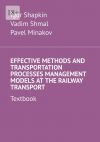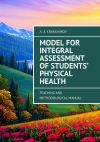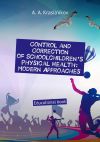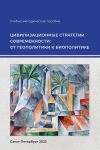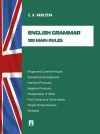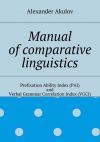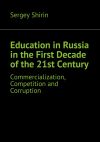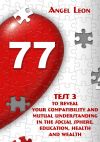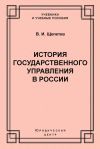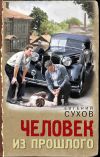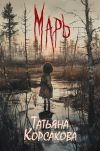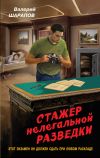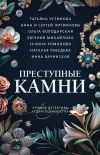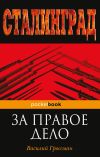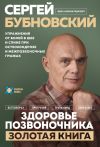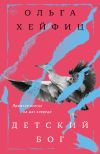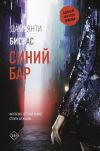Текст книги "Английский язык. Сравнительная педагогика"
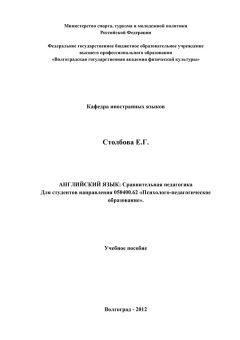
Автор книги: Елена Столбова
Жанр: Учебная литература, Детские книги
сообщить о неприемлемом содержимом
Текущая страница: 5 (всего у книги 5 страниц)
LESSON 14
EDUCATIONAL SYSTEM IN THE USA
TEXT A
1. Read and translate the text.
Education in America took root with the landing of the Pilgrims in the early 1600s. The first public school was established in 1635 in Boston, Mass. There followed the creation of “dame” schools and Latin Grammar schools for higher education. Massachusetts was in the forefront of educational “reform”, when they enacted a law in 1642 that any child not being properly educated, would have to be apprenticed to a trade.
Education is not mentioned in the Constitution, nor is there any federal department of education, so the matter is left to individual states. Education is free and compulsory in all states, however, from the age of 6 till 16 (or 18).
At 6 years of age children go to elementary school, or first grade (the second year is "grade 2" etc.). At elementary school the emphasis is placed on the basic skills (speaking, reading, writing, and arithmetic), though the general principle throughout the American school system is that children should be helped to develop their own interests.
Children move on to high school in the ninth grade, where they continue until the twelfth grade. There are two basic types of high school: one with a more academic curriculum, preparing students for admission to college, and the other offering primarily vocational education (training in a skill or trade).
The local school board decides which courses are compulsory. There is great freedom of choice, however, and an important figure in high schools is the guidance counsellor, who advises the students on what courses to take on the basis of their career choices and the frequent tests defining abilities and propensities.
In order to receive the high school diploma necessary in most states to get into college, students must accumulate a minimum number of credits, which are awarded for the successful completion of each one– or half-year course. Students hoping to be admitted to the more famous universities require far more than the minimum number of credits and must also have good grades (the mark given on the basis of course work and a written examination).
Extracurricular activity (such as playing for one of the schools sports teams) is also very important in the American school system and is taken into consideration by colleges and employers.
The interplay of local, state, and national programs and policies is particularly evident in the field of education. Historically, education has been considered the province of the state and local governments.
Of the more than 3,000 colleges and universities, the academies of the armed services are among the few federal institutions. Additionally, the federal government supports school programs, administers Indian education, makes research grants to universities, underwrites loans to college students, and finances education for veterans.
Trends in education have been toward being more responsive to the needs of a complex society: preschool programs; classes in the community; summer and night schools; and increased facilities for exceptional children. Such programs, however, have been only partially successful.
Vocabulary:
root – начало
forefront – центр деятельности
mention – упоминать
emphasis – значение
admission – поступление
guidance – руководство
credit – зачет
interplay – взаимосвязь
research – исследование
employer – работодатель
landing – прибытие
enacted – представленный
grade – класс, оценка
curriculum – учебная программа
abilities – способности
accumulate – накапливать
propensities – склонности
support – поддерживать
community – сообщество
local – местный
2. Give English equivalents:
Начальная школа, чтение, свобода выбора, область, финансировать, основные умения, профессия, завершение, учитывать, письмо, поступление в колледж, письменный экзамен, навык, внеучебный, политика, заметный, требовать, местный.
3. Translate these expressions:
General principle, was established, the frequent tests, vocational education, local school board, to underwrite loan, the Pilgrims, to enact a law, are awarded, “dame” school, career choices, counsellor, armed services, preschool programmes.
4. Answer the questions:
1. When do children go to elementary school?
2. Who is an important figure in high school?
3. What is extracurricular activity in the American school system?
4. How many colleges and universities are there in the USA?
5. Who finances education for veterans?
6. When do children move on to high school?
7. Is education in the USA free and compulsory in all states?
5. Translate into English:
1. Цель американской школьной системы состоит в том, чтобы помочь детям развить их способности.
2. Образование не упоминается в Конституции США.
3. Местное школьное правление решает, какие курсы обязательны.
4. Студентам, надеющимся быть принятыми в более известные университеты, требуется намного больше, чем минимальное количество зачетов.
5. Исторически образование рассматривалось, как сфера компетенции местных правительств и правительства штатов.
6. Взаимосвязь программ и политик штатов, местных и национальных, очевидна в сфере образования США.
7. По закону 1642 г. каждый ребенок, который не получает образование, должен быть обучен ремеслу.
TEXT B
6. Read and translate the text.
Anton Semenovych Makarenko (1888 – 1939) was a Ukrainian educator and writer, who promoted democratic ideas and principles in educational theory and practice. He elaborated the theory and methodology of upbringing in self-governing child collectives and introduced the concept of productive labor into the educational system. Makarenko is often reckoned among the world’s great educators, and his books have been published in many countries.
In the aftermath of the Russian Revolution he established self-supporting orphanages for street children – including juvenile delinquents – left orphaned by the Russian Civil War. Makarenko was one of the first educators to urge that the activities of various educational institutions – i.e., the school, the family, clubs, public organizations, production collectives and the community existing at the place of residence – should be integrated.
Makarenko wrote several books, of which “The Pedagogical Poem” was especially popular.
Makarenko is well aware that “more active participation of self-management collectives in the rehabilitation of inmates will result in the increased role of mutual dependency and responsibility, making it necessary for members of the collective to evaluate and influence each other”.
General understanding:
1. What did he elaborate?
2. What was his popular book?
3. What were his pedagogical ideas?
4. Which educational institutions should be integrated, according to Makarenko?
5. What was his system of education?
LESSON 15
EDUCATIONAL SYSTEM IN RUSSIA
TEXT A
1. Read and translate the text.
Russians have always shown a great concern for education. The right to education is stated in the constitution of the Russia Federation. It’s ensured by compulsory secondary schools, vocational schools and higher education establishment. It is also ensured by the development of extramural and evening courses and the system of state scholarship and grants.
Education in Russia is compulsory up to the 9th form inclusive. The stages of compulsory schooling in Russia are: primary education for ages 6-7 to 9-10 inclusive; and senior school for ages 10-11 to 12-13 inclusive, and senior school for ages 13-14 to 14-15 inclusive. If a pupil of secondary school wishes to go on in higher education, he or she must stay at school for two more years. Primary and secondary school together comprise 11 years of study. Every school has a «core curriculum» of academic subjects.
After finishing the 9th form one can go on to a vocational school which offer programmes of academic subjects and a programme of training in a technical field, or a profession.
After finishing the 11th form of a secondary school, a lyceum or a gymnasium one can go into higher education. All applicants must take competitive exam. Higher education institution that is institutes or universities offer a 5-years programme of academic subjects for undergraduates in a variety of fields, as well as a graduate course and writes a thesis, he or she receives a candidate’s degree or a doctoral degree.
Higher educational establishments are headed by Rectors. Protectors are in charge of academic and scientific work. An institute or a university has a number of faculties, each specializing councils which confer candidate and doctoral degrees.
The system of higher and secondary education in Russia is going trough a transitional period. The main objectives of the reforms are: to decentralize the higher education system, to develop a new financial mechanism, to give more academic freedom to faculties and students. All secondary schools, institutes and universities until recently have been funded by the state. Now there is quite a number of private fee-paying primary and secondary schools, some universities have fee-paying departments.
Vocabulary:
concern – интерес
ensure – обеспечивать
inclusive – включительно
senior – старший
academic – учебный
competitive – конкурсный
graduate course – аспирантура
head – возглавлять
fund – финансировать
department – отделение
state – утверждать
compulsory – обязательный
primary – начальный
comprise – составлять
field – область
undergraduate – выпускник
thesis – диссертация
confer – присуждать
fee-paying – платный
council – ученый совет
2. Give English equivalents:
Частный, количество, подготовка, специализированный, средняя, продолжать, обязательные предметы, государство, отделение, учебная программа, окончание, вуз, заочное обучение, финансировать, разнообразие, развитие, получать, стипендия.
3. Translate these expressions:
Vocational schools, doctoral degree, academic freedom, transitional period, evening courses, higher education establishment, to decentralize the system, financial mechanism, until recently, scientific work, technical field.
4. Answer the questions:
1. What does a vocational school offer?
2. Who is the head of higher educational establishments?
3. Is education in Russia compulsory?
4. What should a pupil do if he wants to go on in higher education?
5. What are the main objectives of the reforms?
6. Where is the right to education stated?
7. What are the stages of compulsory schooling in Russia?
5. Translate into English:
1. После окончания 11 класса средней школы, лицея или гимназии можно поступать в вузы.
2. Высшие учебные заведения возглавляются ректорами.
3. Система высшего и среднего образования в России переживает переходный период.
4. Все средние школы, институты и университеты до недавнего времени финансировались государством.
5. Русские люди всегда проявляли большой интерес к образованию.
6. Существует также заочное обучение и вечерние курсы.
TEXT B
6. Read and translate the text.
Vasyl Olexandrovych Sukhomlynsky (September 1918 – September 1970) was a Ukrainian humanistic educator who saw the aim of education in producing a truly humane being.
Sukhomlynsky was born in a peasant family in the village of Omelnyk in Ukraine. In 1935 he started to work as a teacher not far from his native village. In 1938 Sukhomlynsky enrolled into the Poltava Pedagogical Institute out of which he graduated the same year. Upon graduation he returned to native lands where he worked as a teacher of the Ukrainian language and literature.
The core of Sukhomlynsky's system of education was his approach to moral education, which involved sensitising his students to beauty in nature, in art and in human relations, and encouraging students to take responsibility for the living environment which surrounded them.
Sukhomlynsky taught his students that the most precious thing in life is a human being, and that there is no greater honor than to bring joy to other people. He taught them that to bring joy to other people, and especially to their families, they should strive to create beauty in themselves and in the environment.
The foundation of all personal growth is health, and Sukhomlynsky gave a great deal of his attention to ensuring that children enjoyed optimum health, especially in early childhood, when character is formed. Sukhomlynsky is the author of the 1969 book “I Give my Heart to the Children”.
General understanding:
1. Who was Vasyl Sukhomlynsky?
2. What was his system of education?
3. What did he do after the graduating from the institute?
4. What is his famous book?
5. What is the foundation of all personal growth, according to Sukhomlynsky?
СПИСОК ИСПОЛЬЗОВАННОЙ ЛИТЕРАТУРЫ:
1. Ваулина Ю.Е. Английский язык для студентов факультета дошкольного воспитания: Начальный курс: Учеб. для студ. высш. учеб. заведений/ Ю.Е. Ваулина, Е.Л. Фрейдина. – М.: Гуманит. изд. центр ВЛАДОС, 2003. – 240 с.
2. Мельчина О.П. On Education. О педагогике: Практикум по английскому языку/ О.П. Мельчина, Л.Ю. Морозова. – М.: Флинта: Наука, 1999. – 176 с.
3. Сборник педагогических текстов на английском языке для неязыковых факультетов /Сост. В.Г. Грачева. – Волгоград, “Перемена”, 2003. – 24 с.
4. интернет сайты http://en.wikipedia.org/wiki, http://www.buzzle.com/articles
Правообладателям!
Это произведение, предположительно, находится в статусе 'public domain'. Если это не так и размещение материала нарушает чьи-либо права, то сообщите нам об этом.